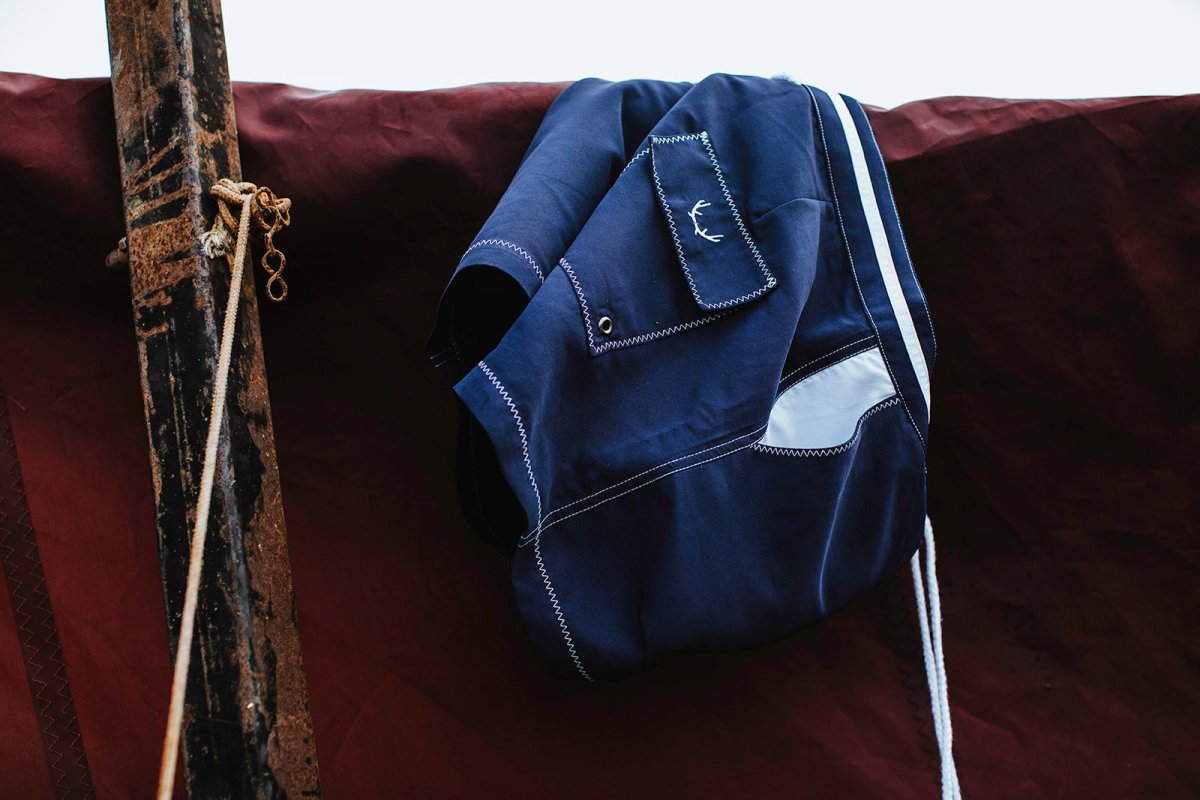We’ve all seen it — that small “Made in Europe” label sewn into the lining of a jumper or printed inside a T-shirt. But what does it really mean? Superior quality? Fair working conditions? A lower carbon footprint? The answer is yes… but not always. Because behind the label, there’s often a blurry reality — and some brands are very good at playing the game.
So today, let’s take a closer look at what it really means to wear clothes made in Europe.
What does “Made in Europe” actually mean?
A vague definition
The issue is that the label “Made in Europe” can be applied quite loosely. Too loosely, in fact. If the final stitching is done in Europe, it can legally carry the label — even if the fabrics come from Asia, the dyeing happens outside the EU, or the elastic has circled the globe. The result? As a consumer, it’s hard to know what you’re really buying.
What “truly” Made in Europe looks like
A genuinely European-made garment means:
- Raw materials are processed locally
- Dyeing and weaving happen in the same region
- The final product is assembled in a European workshop
- The supply chain is short, consistent, and transparent
In other words, it’s not a marketing gimmick - it’s a supply chain that makes geographical and ethical sense.
Why choose clothes made in Europe?
Fairer working conditions
The textile industry isn’t exactly known for being ethical. But in Europe, labour laws are stricter: minimum wages, safety standards, regulated hours. It’s not perfect - but it’s far from the sweatshops and forced labour seen elsewhere.
Buying European-made means helping avoid the worst of the fashion industry’s dark side.
A lower carbon footprint
We won’t give you a geography lesson, but shipping tonnes of textiles from across the world generates a lot of CO₂. A European production model means:
- Shorter distances between each stage of production
- Greener energy (like in Portugal or Austria)
- Less pointless transport between suppliers, workshops, and warehouses
Bottom line: Made in Europe usually means a much smaller footprint — and that’s measurable.
More consistent quality
“Craftsmanship” isn’t just a buzzword. Countries like Portugal, Italy, France, and Germany have deep-rooted textile traditions. There’s know-how - and it shows in the stitching, the fit, and the finish.
That doesn’t mean everything made in Europe is flawless, but your chances of getting a solid, long-lasting piece are much higher.
Bluebuck: a transparent take on Made in Europe
A short, local, and traceable supply chain
At Bluebuck, we don’t just tick the “Made in Europe” box. We live it.
- All our products are fully made in Europe. No exceptions.
- 100% of our suppliers are based in Europe.
- Most of them are within 30 km of Braga, Portugal.
Our jerseys are dyed, finished, and sewn into T-shirts and boxers in a small family-run factory. Our socks? Knitted in Portugal too. Our packaging? Carton, tissue paper, labels - all Portuguese. Even our warehouse is there. That’s what a short supply chain really looks like.
Some exceptions - and we own them
Not everything grows in Europe. Our organic cotton comes from Turkey or India - because cotton simply doesn’t grow here. But it’s GOTS certified, which guarantees its origin and responsible processing.
For elastics and labels, we sourced the best from Austria and Italy. Again - no world tours, just smart choices.
Even our recycled fibres for swimwear and active underwear come from marine plastic waste - turned into Seaqual™ yarn in Spain.
Made with renewable energy
Another important point: Bluebuck’s European-made clothing is produced using mostly green electricity.
- Our Portuguese workshop runs entirely on renewable power
- Our fabric supplier uses solar panels
- In Austria, energy is 80% renewable thanks to hydro and solar
That’s a conscious choice: we only partner with suppliers going in the right direction.
No greenwashing, no carbon-neutral gimmicks
We don’t play the “carbon neutral” card through offsetting schemes that delay real action. Our goal is to reduce emissions - now.
How? Through lifecycle analysis, more recycled fibres, energy efficiency, and the development of new materials. It’s a lot of work - but it’s real.
What does this change for you?
You don’t need to be an activist. But when you wear a European-made garment that’s well-made, traceable, and coherent - you’re making a choice that matters.
You’re choosing:
- A product made in respectful working conditions
- With a lower carbon footprint
- Using cleaner materials
- That won’t fall apart after three washes
Every purchase is a vote - for a version of fashion that doesn’t hide behind vague labels.
~~~
Made in Europe isn’t a magic fix. But when it’s done properly, it checks a lot of boxes: quality, sustainability, fairness. And if it’s made by a brand that’s honest about what it does — like Bluebuck — then that’s a win.
No, we won’t change the world with a pair of boxers. But we can stop buying carelessly, blindly, and wastefully. And that’s already a great start.
